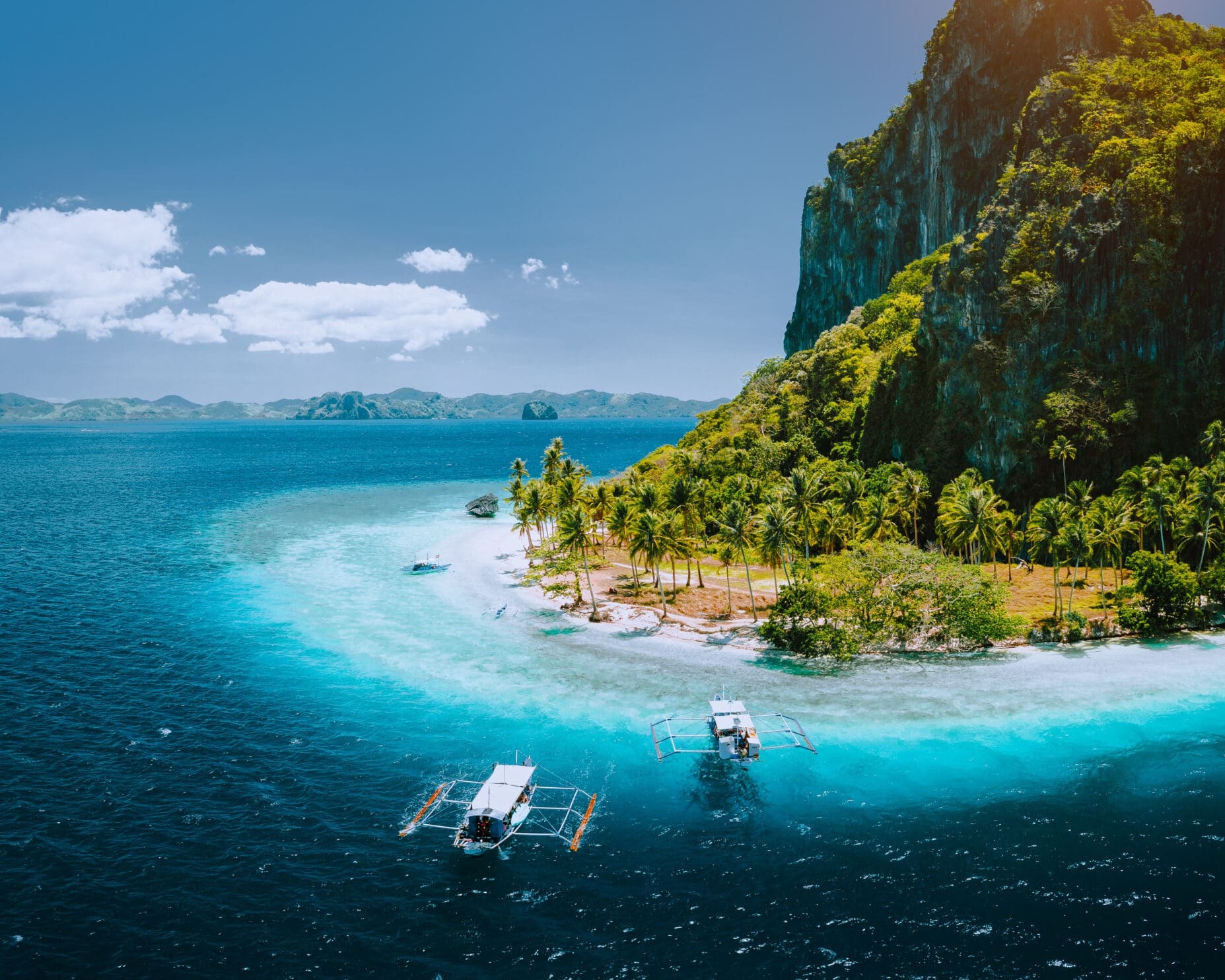Welcome to the Philippines, where over 7,000 islands boast pristine beaches, vibrant marine life, and lush landscapes are waiting to be explored.
From the enchanting Chocolate Hills of Bohol to the sapphire waters of Palawan, the Philippines offers a tapestry of natural wonders and cultural treasures. Dive into the heart of Filipino hospitality, savor the flavors of its rich cuisine, and immerse yourself in a world where every sunset marks the beginning of a new adventure.

The Best Time To Visit
The best time to visit the Philippines is during the dry season, from December to February, when the weather is cooler and less humid, making it ideal for exploring the islands, beaches, and cultural sites.
March to May marks the hot dry season, with temperatures rising significantly, especially in April and May, and the heat can be intense.
For those interested in diving and snorkeling, visibility and marine life conditions vary across the country and throughout the year, so it’s worth checking specific destinations for the best times to go.
What To Know
In the Philippines, Filipino and English are the official languages.
Besides these, the Philippines is home to a rich tapestry of languages, with over 170 languages and dialects spoken throughout the archipelago. Some of the major regional languages include Cebuano, Ilocano, Hiligaynon (Ilonggo), Bicolano, Waray, and Kapampangan, each predominant in different parts of the country.
For travelers, the widespread use of English makes communication relatively easy, especially in urban areas and popular tourist destinations.
The currency used in the Philippines is the Philippine Peso.
For travelers, it’s advisable to have cash on hand, especially when visiting smaller towns or rural areas where electronic payments may not be widely accepted.
ATMs are readily available in urban areas and shopping centers, making it easy to withdraw cash. Credit cards are accepted in major hotels, restaurants, and shops, but reliance on cash transactions remains common across the country.
The Philippines offers a wealth of cultural and natural attractions for travelers, but like any destination, it presents certain safety considerations. Generally, the Philippines is safe for travelers who take standard precautions to mitigate common risks.
By staying informed, respecting local customs, and using common sense, most travelers can enjoy a safe and enjoyable visit to the Philippines. Always check your government’s travel advisories for the latest information before your trip.
Public transport in the Philippines is varied and characterizes the local flavor of travel, catering to the needs of both urban dwellers and visitors.
Jeepneys: Iconic and colorful, jeepneys are the most popular form of public transport in urban and rural areas, known for their unique designs and as a symbol of Philippine culture. They operate on fixed routes, and fares are inexpensive.
Tricycles: Motorized tricycles are common for short distances within towns and neighborhoods. They’re versatile and can navigate narrow roads, making them ideal for door-to-door transportation.
Buses: Buses serve longer routes, connecting cities and provinces. In cities like Manila, buses and mini-buses (FX taxis) are a mainstay for commuters, though traffic can significantly affect travel times.
Taxis and Ride-Hailing Apps: Taxis are widely available in cities, and ride-hailing apps like Grab have become a preferred method for convenient and safe travel within urban areas.
Trains: In Metro Manila, the Light Rail Transit (LRT) and Metro Rail Transit (MRT) systems provide an alternative to road travel, connecting major districts and cities. The Philippine National Railways (PNR) operates commuter trains in Manila and long-distance trains to provinces in the Bicol region.
Ferries: Given the archipelagic nature of the Philippines, ferries and boats are crucial for traveling between islands. There are numerous ferry services, from fast crafts to roll-on/roll-off (RORO) vessels, connecting the islands.
